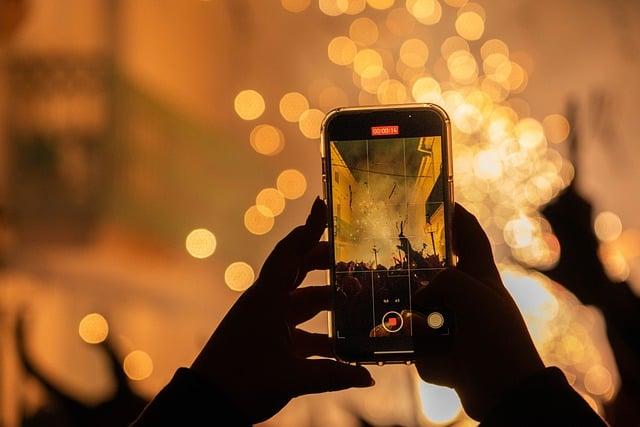Once upon a time in the bustling streets of Philadelphia, the day after Thanksgiving was anything but ordinary. In the 1960s, police officers coined the term “Black Friday” to describe the chaos that ensued as hordes of shoppers flooded the city, eager to kick off the holiday shopping season. The streets were filled with excitement, but also frustration for the officers managing the crowds. Over time, retailers embraced the term, transforming it into a celebration of deals and discounts. Thus, Black Friday was born, evolving from a day of disorder into a cherished shopping tradition.
Table of Contents
- Origins of Black Friday and Its Evolution Over Time
- Cultural Significance of Black Friday in American Society
- Global Adoption of Black Friday: A Worldwide Shopping Phenomenon
- Tips for Navigating Black Friday Sales Effectively
- Q&A

Origins of Black Friday and Its Evolution Over Time
The concept of Black Friday traces its roots back to the early 20th century, primarily associated with the day after Thanksgiving in the United States. Initially, it was a day when retailers began to turn a profit, moving from the “red” (indicating losses) to the “black” (indicating profits) in their financial records. This transition was so significant that it eventually led to the term “Black Friday.” However, the day was not always celebrated; it was often met with skepticism and even disdain by local police in Philadelphia, who used the term to describe the chaos that ensued as hordes of shoppers flooded the streets, creating traffic jams and overwhelming stores. Over time, this negative connotation faded, and the day began to be embraced by retailers as a major shopping event.
- Massive sales and promotions across various sectors, from electronics to fashion.
- Extended shopping hours, with many stores opening on Thanksgiving evening.
- Global participation, as countries around the world adopt the concept, adapting it to their own retail calendars.

Cultural Significance of Black Friday in American Society
The phenomenon of Black Friday has evolved into a cultural touchstone in American society, symbolizing the unofficial start of the holiday shopping season. This day, marked by frenzied consumerism, reflects deeper societal values such as the pursuit of savings and the thrill of competition. As shoppers flock to stores and online platforms, they engage in a ritual that transcends mere purchasing; it fosters a sense of community among bargain hunters. The excitement surrounding doorbuster deals and limited-time offers creates an atmosphere of anticipation, where individuals bond over shared experiences, whether in long lines or through social media discussions about the best finds.
Moreover, Black Friday serves as a mirror to the American ethos of consumerism, highlighting the intricate relationship between identity and material possessions. The day is not just about discounts; it embodies the cultural narrative of abundance and the desire for social status through consumption. As families and friends gather to strategize their shopping plans, the event also emphasizes the importance of tradition in American life. The blending of commerce and culture is evident as retailers craft marketing campaigns that tap into nostalgia, encouraging consumers to create lasting memories while shopping. This unique intersection of economic activity and cultural expression solidifies Black Friday’s place in the American calendar, making it a significant event that resonates with diverse demographics across the nation.

Global Adoption of Black Friday: A Worldwide Shopping Phenomenon
The phenomenon of Black Friday has transcended its American roots, evolving into a global shopping extravaganza that captivates consumers across continents. Originally a post-Thanksgiving sales event in the United States, it has now become synonymous with massive discounts and shopping sprees in various countries. Retailers worldwide have embraced this trend, often adapting it to fit local customs and shopping habits. As a result, Black Friday has transformed into a cultural event, marked by long lines, early store openings, and a sense of urgency that drives shoppers to snag the best deals.
Countries such as Canada, the United Kingdom, and Australia have enthusiastically adopted Black Friday, each adding their unique flair to the occasion. In Canada, for instance, the event has gained traction as a way to kick off the holiday shopping season, while in the UK, it has sparked a competitive retail environment, with stores vying for consumer attention through innovative marketing strategies. Other nations, including Brazil and India, have also joined the fray, showcasing the universal appeal of this shopping phenomenon. The global embrace of Black Friday highlights not only the power of consumerism but also the interconnectedness of modern retail practices.

Tips for Navigating Black Friday Sales Effectively
To make the most of Black Friday sales, preparation is key. Start by creating a shopping list of items you genuinely need or want. This will help you avoid impulse purchases that can lead to buyer’s remorse. Additionally, research the products beforehand to compare prices and identify the best deals. Many retailers release their Black Friday ads in advance, so take the time to browse through them and highlight the offers that catch your eye. This way, you can prioritize your shopping and focus on the best discounts.
Another effective strategy is to set a budget before diving into the sales frenzy. Determine how much you are willing to spend and stick to it, as it’s easy to get carried away in the excitement of the day. Consider shopping online to avoid long lines and crowded stores, which can be overwhelming. If you do choose to shop in person, arrive early to snag the best deals and be prepared for potential stock shortages. Lastly, don’t forget to check for additional savings, such as coupons or cashback offers, which can further enhance your shopping experience.
Q&A
-
What is the origin of the term “Black Friday”?
The term “Black Friday” originated in Philadelphia in the 1960s, where it was used by police to describe the heavy pedestrian and vehicle traffic that occurred the day after Thanksgiving. It was a day when officers had to work extra hours to manage the crowds.
-
How did Black Friday become associated with shopping?
Retailers began to embrace the term in the 1980s, rebranding it to reflect the day when stores would turn a profit, or go “into the black.” This shift helped to promote sales and attract shoppers, transforming it into a major shopping event.
-
Is Black Friday celebrated worldwide?
While Black Friday originated in the United States, it has gained popularity in other countries, with many retailers adopting the sales event. Countries like Canada, the UK, and Australia now participate, often with their own unique twists.
-
What are some common Black Friday shopping practices?
Shoppers often prepare for Black Friday by:
- Researching deals in advance
- Creating a shopping list
- Arriving early at stores or shopping online
- Taking advantage of doorbuster deals
As we navigate the bustling aisles and online sales, it’s essential to remember the roots of Black Friday. From its humble beginnings to a global shopping phenomenon, this day reflects our evolving relationship with commerce and consumerism. Happy shopping!




